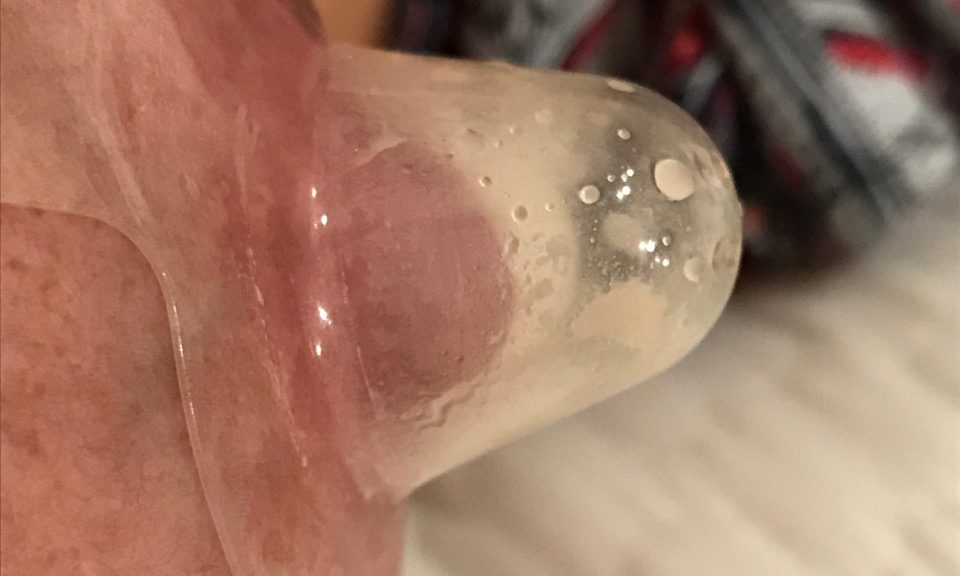
Pain and nipple shields: review of a research study
Pain and nipple shields: when professional techniques to reduce pain in breastfeeding are not effective, the use of nipple shields can be considered one of the resources for nipple pain management.
It is well known that pain, and especially sore nipples, are one of the leading causes of women stopping to breastfeed earlier than they planned to do so (1). To reduce pain, professionals who accompany mothers in their breastfeeding journey should evaluate and help mothers to improve their breastfeeding technique by checking for correct attachment and positioning and providing recommended guidelines for healing any nipple wounds that may have been created.
If these strategies to reduce pain are not effective, the use of nipple shields may be considered. Maternal experiences with the use of nipple shields suggest that they can be helpful in initiating breastfeeding and preventing the early stopping of breastfeeding (2,3). However, healthcare professionals are concerned that the use of nipple shields might reduce milk transfer and some studies from years ago describe how the use of nipple shields negatively affects the exclusivity and duration of breastfeeding by reducing the volume of milk transfer (4).
It should be pointed out that these studies have limitations in their methodology that raise doubts about the validity of their results. For example, they do not take into account the different degrees of breast fullness caused by repeated feedings and/or by the use of breast pumps with and without nipple shields.
In this context, research published in 2021 in the journal “Breastfeeding Medicine” examined the effect of the use of nipple shields on milk transfer and nipple pain (5). To do so, researchers conducted a randomised clinical study in which both the control group (mothers without pain) and the group with nipple pain were randomly assigned to use or not use nipple shields. Milk transfer was measured by the test weighing method by weighing before and after a feed (6). Furthermore, milk fat content was measured, as well as nipple pain by using validated pain rating scales (McGill and VAS) and feeding efficiency (in mL/min) by dividing the total milk intake by the duration of feeding. The most notable results were:
- In mothers with pain, the use of nipple shields did not significantly (p>0.05) reduce the volume of milk transferred during feeds nor the duration of feeding, but it did significantly reduce feeding efficiency (mean 4 mL/min in mothers who used shields compared to 7 mL/min in mothers who did not use nipple shields).
- In women who were pain-free, the use of nipple shields did significantly (p<0.05) reduce milk transfer volume, the percentage of available milk when pumping and the efficiency of the feeding session.
- They did not find any significant differences in the degree of pain experienced by the women, as measured by the VAS and McGill scale, with the use of nipple shields. The authors suggest that this may be because the women in the pain group had not tried to breastfeed without shields before the study. Pain is a feeling that changes over time, so it is possible that the intensity of pain may have decreased to lower levels when nipple shields were introduced.
Although the sample size of this study was small (25 women in the pain group and 34 in the control group), it provides new insights into the use of nipple shields in women experiencing pain during breastfeeding. It concluded that it is a strategy that does not seem to affect milk transfer.
As we explained at the beginning of this article, a professional evaluation and improvement of the breastfeeding technique are essential before assuming the need to introduce the use of nipple shields. Although there are more and more studies on their safety in breastfeeding, we cannot ignore the fact that they are a distorting element that increases the complexity of breastfeeding. Nipple shields can be an ally in specific breastfeeding journeys when their use is adequately justified.
References:
1. Schwartz K, J S D’Arcy H, Gillespie B, Bobo J, Longeway M, Foxman B. Factors associated with weaning in the first 3 months postpartum. J Farm Pr [Internet]. 2002;51(5):439–44.
2. Hanna S, Wilson M, Norwood S. A description of breast-feeding outcomes among U.S. mothers using nipple shields. Midwifery. 2013;29(6):616–21.
3. Powers D, Bodley Tapia V. Women’s experiences using a nipple shield. J Hum Lact [Internet]. 2004;20(3):327–34.
4. Auerbach KG. The effect of nipple shields on maternal milk volume. J Obstet Gynecol neonatal Nurs JOGNN. 1990;19(5):419–30.
5. Coentro VS, Perrella SL, Lai CT, Rea A, Murray K, Geddes DT. Impact of Nipple Shield Use on Milk Transfer and Maternal Nipple Pain. Breastfeed Med. 2021 Mar 1;16(3):222–9.
6. Arthur PG, Hartmann PE, Smith M. Measurement of the milk intake of breast-fed infants. J Pediatr Gastroenterol Nutr. 1987;6(5):758–63.